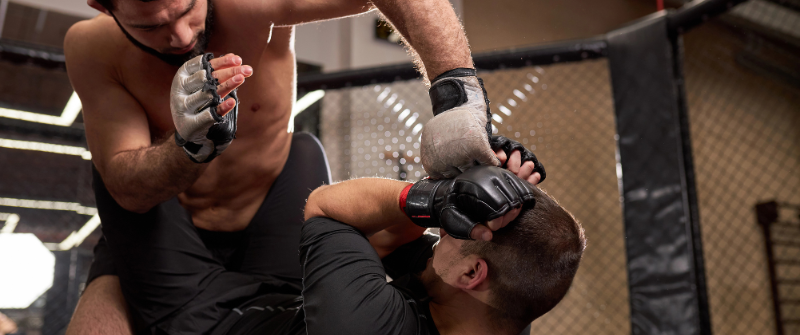
- by NEXO Team
- October 27, 2020
Owning a gym is a rewarding opportunity and great for entrepreneurs everywhere. Not only are you offering a location for your members to build and maintain good health, but you are generating a business that you want to be successful financially.
When you are developing a gym business plan, you must outline the following areas of your gym so that when you present it to a lender or investors, you can illustrate your desire for success. This includes everything from equipment to the services provided. Know exactly what you need to have in order to maintain compliance.
1. Outline Your Theme in the Executive Summary
Gyms come in all different types, with various equipment to target different fitness goals and lifestyles. When you begin developing your gym business plan, you need to know who your audience is for that gym. When you write your executive summary, your gym type needs to be outlined. There are a few different types of gyms that you can choose from.
- Membership Gym
- 24 Hour Access Gym
- Specialized Training

Membership Gym
This is your average gym, stocked with the most popular equipment pieces for cardiac and strength training. Members can work out on their own or meet with a personal trainer on your staff at scheduled times. Your gym will have posted hours of operation with at least one staff member available to assist members with any issues or concerns they may have.
24 Hour Access Gym
Another popular gym style is the 24 hour access gym. These models have become more popular because they allow members to work out on their own schedule around the clock. Each member is given a code to enter the building and take responsibility for their own workouts.
Specialized Training Gym
Some gyms are not designed in the traditional format because they want to offer specialized training through programs such as CrossFit, boot camp training for their members, or a specialized plan that is unique to your gym. The layout, equipment, and staff needs differ significantly with specialized training gyms.
Outline Your Legal Structure
If you plan to own your gym outright, have partners, or finance the business, this needs to be outlined in the next phase of your business plan. Outline it as an LLC, partnership, or S Corp as it applies to your business.
2. Secure A Location With Market Research
Knowing what kind of gym you are establishing will assist you with your market research. With market research on your preferred gym type, you will have an idea of the geographic area for your gym and the size of the facility you will need. Once you have identified the audience and type of gym that you want to open, you need to search for a location. Based on the type of gym you are opening, you know what size location you need.
If you plan to open a community gym for those in the immediate area, you want to consider a central location for your customers. For specialized training or 24 hour access gyms where there may not be many members in the facility at one time, commercial spaces in strip malls may be ideal for you. The smaller space, the smaller the rent in most cases, so this is also something to consider when starting and building your clientele.
3. Hiring Staff For Your Facility
Knowing your gym location's style and size will give you an idea of how many staff members you need to hire and what their positions need to be.
- Front Office Staff Member
- Personal Trainers
- Membership/Sales Manager
These are just the basic positions that any gym needs just starting. In your business plan, you should outline how many personal trainers to member ratio for your business. For example, for every 25 members you sign, you should have a personal trainer available for private use and to assist your members while using the equipment.
Staff members who are working as personal trainers or group instructors will need to have their certifications available at the time of hire. While formal education may not be required for these positions, there are certification requirements that these individuals must meet so that you can accurately advertise and offer these types of services for your clients.
4. Decide on Equipment
Depending on the type of gym you opt for when developing your business plan, you will need certain gym equipment for your clients. If you are looking for more traditional options for strength training or wellness health, make a list of the following items:
- Treadmills
- Elliptical
- Dumbbell weights
- Medicine Balls
- Stationary Bikes
- Rowing Machine
- Training Benches
- Step Benches
These are some of the most basic and common gym items found to diversify workouts for your clients. These different types of equipment provide a variety of exercise opportunities for your members. Equipment such as treadmills are popular among members and used for breaks between strength training. These popular items may require two or three so that your clients can complete their workout on time.
5. Services and Products
When you finalize your business plan for your gym, you need to outline any services you plan to offer and products available for your members to purchase.
Services
When you own a gym, you have the flexibility to offer several services. As you are getting started, you can include standard services such as personal training and group classes as a way to interest your clientele and build your membership.
Products

Having a retail area available for your staff can be a great option. Offer items such as nutritional drinks and snacks for purchase. You can also keep a supply of complimentary items on stock for your members when they forget theirs or run out while using the gym. How much you sell or allow as a compliment to membership should be outlined in the final financial operation evaluation plan.
6. Finalizing Licenses and Insurance
Before you can begin your business, you need to finalize any licensure that your gym needs to be open. Everything from the business license to staff licensure and certifications must be updated and valid by the opening date.
Another final component is insurance for your gym. Outside of standard commercial insurance coverages, you should invest in gym insurance that offers liability coverage as well as equipment protection. The investment you make into your insurance could be the difference in the doors closing should you have an accident on site.
Let NEXO Fitness Solutions Help You Today
If you are currently undergoing a gym business plan and need insurance assistance, our team at NEXOFit is here to help. Outside of insurance coverage, we offer other services such as equipment financing and marketing and advertising for your gym.
for more information on the services we offer.
Categories
Fill out a short form to contact us with your questions or to receive a customized quote.
Recent Posts
-
 NEXO’s Affinity Program: How Fitness Suppliers and Associations Can Partner for Profit and Protection
December 5, 2025
NEXO’s Affinity Program: How Fitness Suppliers and Associations Can Partner for Profit and Protection
December 5, 2025 -
%20(1).png) How to Insure an MMA Gym Without Paying for Coverage You Don’t Need
December 5, 2025
How to Insure an MMA Gym Without Paying for Coverage You Don’t Need
December 5, 2025 -
 Mastering Liability for Jiu-Jitsu Tournaments and Martial Arts Events
December 5, 2025
Mastering Liability for Jiu-Jitsu Tournaments and Martial Arts Events
December 5, 2025 -
 From Zen to Zoning: What Every Yoga and Pilates Studio Owner Should Know Before Signing a Lease
December 5, 2025
From Zen to Zoning: What Every Yoga and Pilates Studio Owner Should Know Before Signing a Lease
December 5, 2025 -
%20(1).png) Why Your Referral & Loyalty Program Can Impact Your Insurance Rates
December 5, 2025
Why Your Referral & Loyalty Program Can Impact Your Insurance Rates
December 5, 2025

